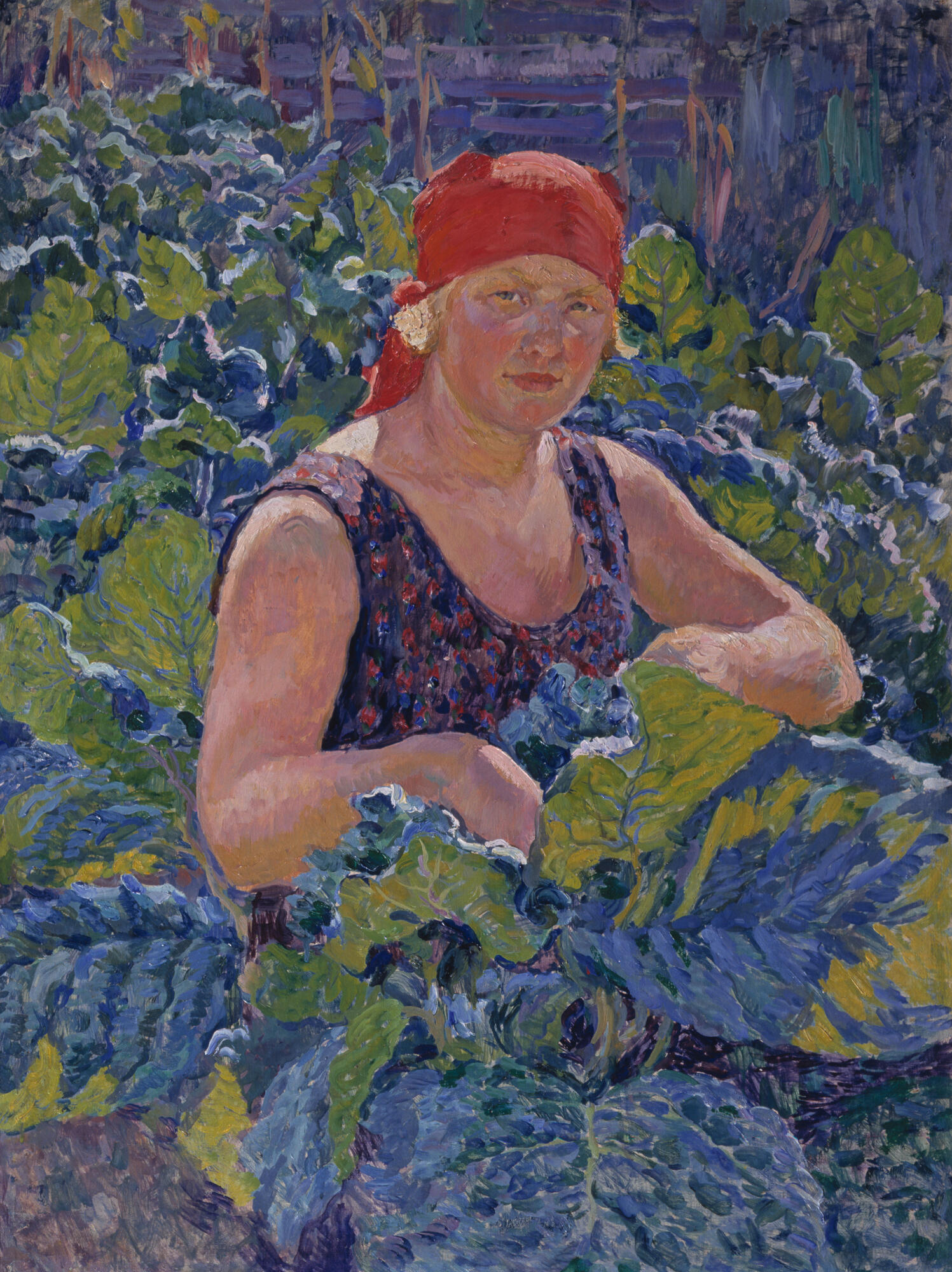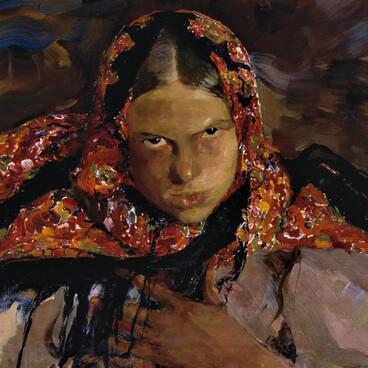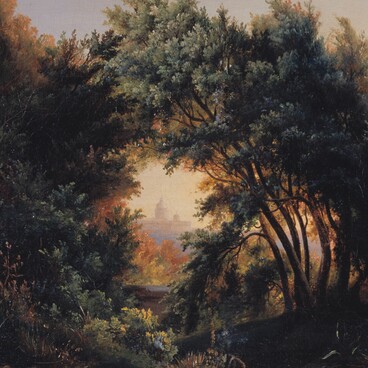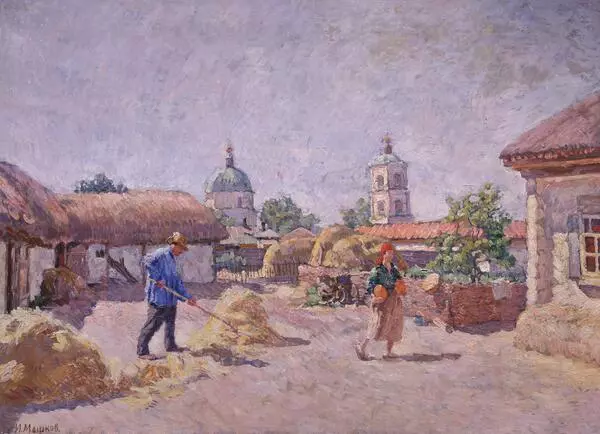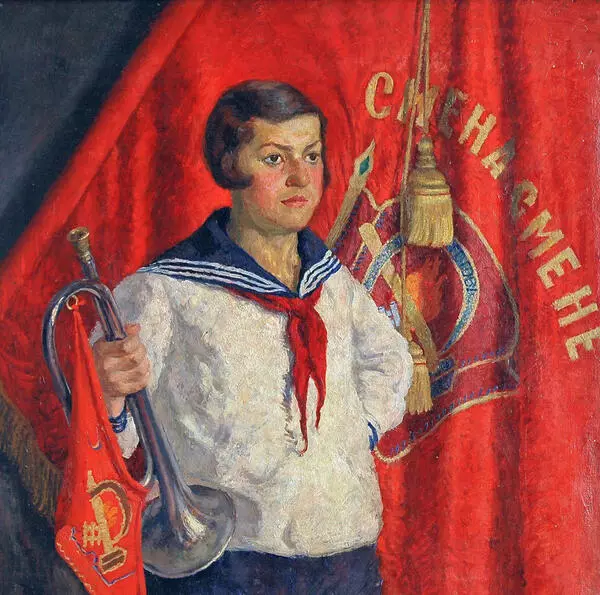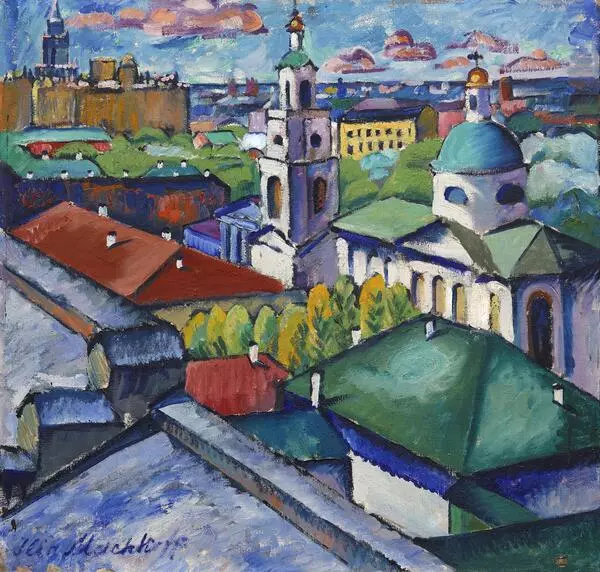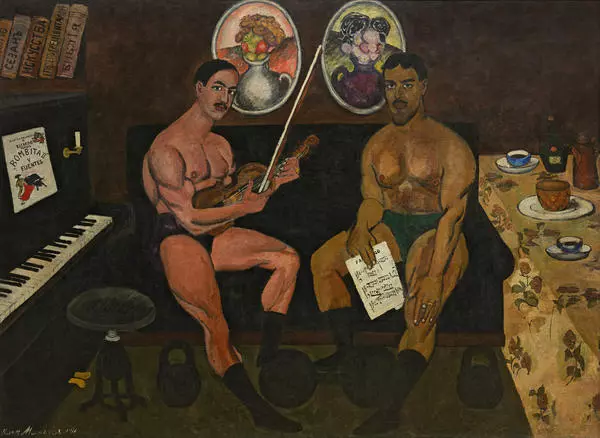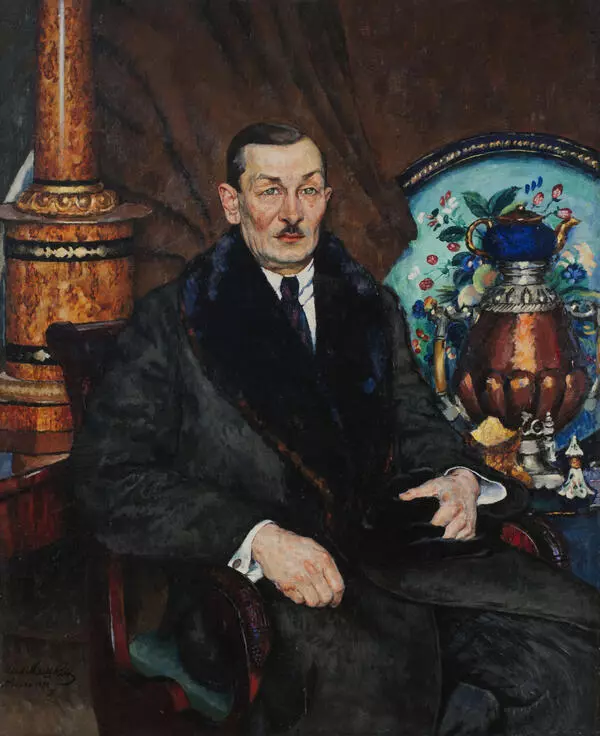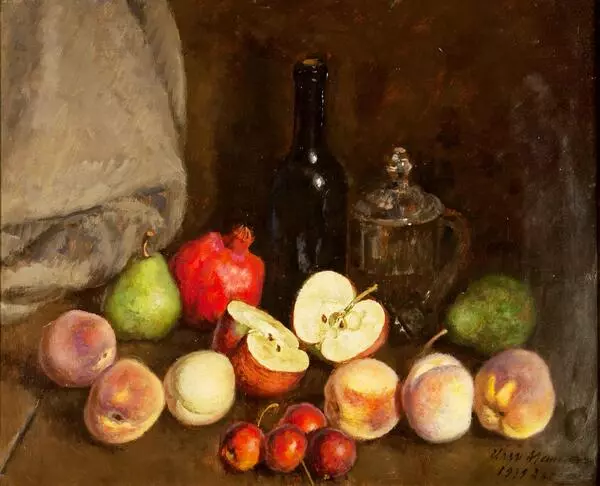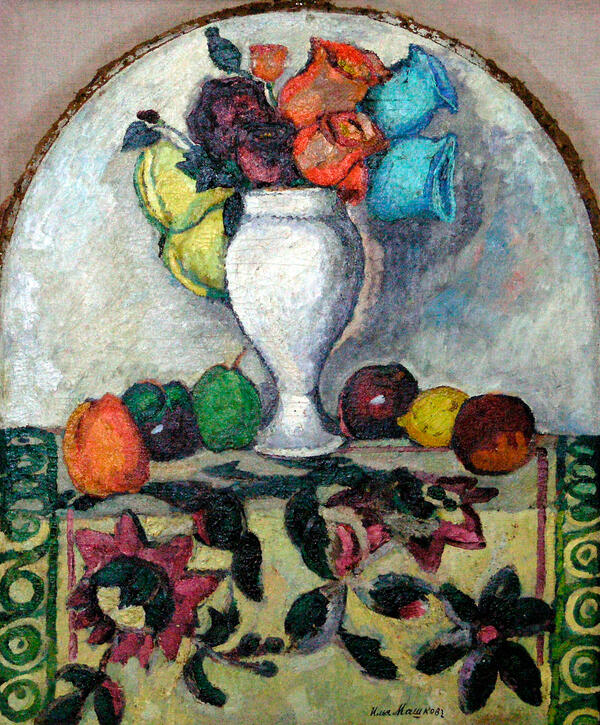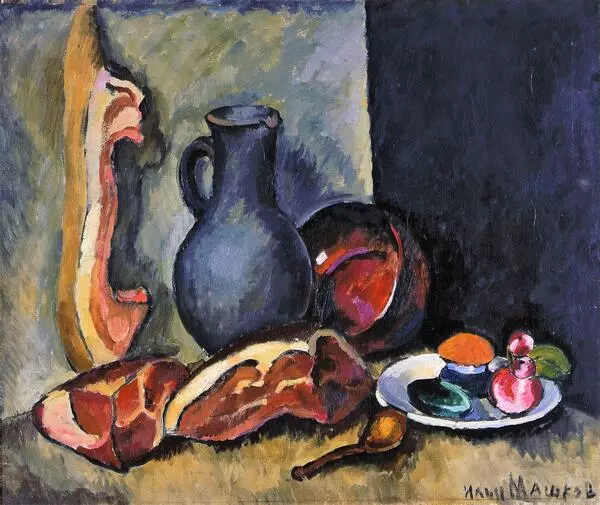In the fall of 1929, Ilya Mashkov left teaching at the Higher Artistic and Technical Institute (VKHUTEIN), and a year later, left the Association of Artists of the Revolution (AKHR). He explained his decision by the desire to work independently.
In July of 1930, for the first time in almost 30 years, the painter returned to his homeland, to the village Mikhailovskaya. The reason for the trip was a commission from the People’s Commissariat of Education for the painting of portraits, from which the publishing house was supposed to make replications for the calendar walls — a cardboard on which the calendar was hung.
Mashkov was supposed to paint three works on the themes of gardening, tobacco growing and butter-making. Two paintings, painted that summer are housed in the Volgograd Museum of Fine Arts, they are “Collective Farm Woman with Pumpkins” and “Girl on the Tobacco Plantation”. In total, during this period, Mashkov created nine works, which he displayed at the exhibition at the school of collective farm youth.
The works intended for the gross audience were closely related to the style of the Soviet grand portrait, which was one of the leading genres of official Soviet art in the 1930s. “Collective Farm Woman with Pumpkins” was painted from life with physiognomical accuracy, but fine art critics attribute it to a portrait-type. This means that in the picture Mashkov did not depict a specific woman, but a generalized character of a shock-worker, a heroine of labor. At that time, the motive of a woman-toiler was very relevant and approved by the Soviet government.
At the same time, the canvas is made in the Mashkov’s aesthetics, close to folklore, primitivism, and lubok (popular print). The composition of the work resembles ceremonial photographs of that time, which showed the person from the best side, from the most favorable angle. The portrait is made with large, dense, energetic strokes. Bright color solutions refer to folk art, to applied and decorative arts.
The portrayed woman with large facial features, a big figure and strong hands belongs to one of Mashkov’s favorite types of characters — powerful and rude. In the image of the “new person” the painter emphasizes the qualities traditional for his characters: energy, love of life, health and strength.
In July of 1930, for the first time in almost 30 years, the painter returned to his homeland, to the village Mikhailovskaya. The reason for the trip was a commission from the People’s Commissariat of Education for the painting of portraits, from which the publishing house was supposed to make replications for the calendar walls — a cardboard on which the calendar was hung.
Mashkov was supposed to paint three works on the themes of gardening, tobacco growing and butter-making. Two paintings, painted that summer are housed in the Volgograd Museum of Fine Arts, they are “Collective Farm Woman with Pumpkins” and “Girl on the Tobacco Plantation”. In total, during this period, Mashkov created nine works, which he displayed at the exhibition at the school of collective farm youth.
The works intended for the gross audience were closely related to the style of the Soviet grand portrait, which was one of the leading genres of official Soviet art in the 1930s. “Collective Farm Woman with Pumpkins” was painted from life with physiognomical accuracy, but fine art critics attribute it to a portrait-type. This means that in the picture Mashkov did not depict a specific woman, but a generalized character of a shock-worker, a heroine of labor. At that time, the motive of a woman-toiler was very relevant and approved by the Soviet government.
At the same time, the canvas is made in the Mashkov’s aesthetics, close to folklore, primitivism, and lubok (popular print). The composition of the work resembles ceremonial photographs of that time, which showed the person from the best side, from the most favorable angle. The portrait is made with large, dense, energetic strokes. Bright color solutions refer to folk art, to applied and decorative arts.
The portrayed woman with large facial features, a big figure and strong hands belongs to one of Mashkov’s favorite types of characters — powerful and rude. In the image of the “new person” the painter emphasizes the qualities traditional for his characters: energy, love of life, health and strength.


